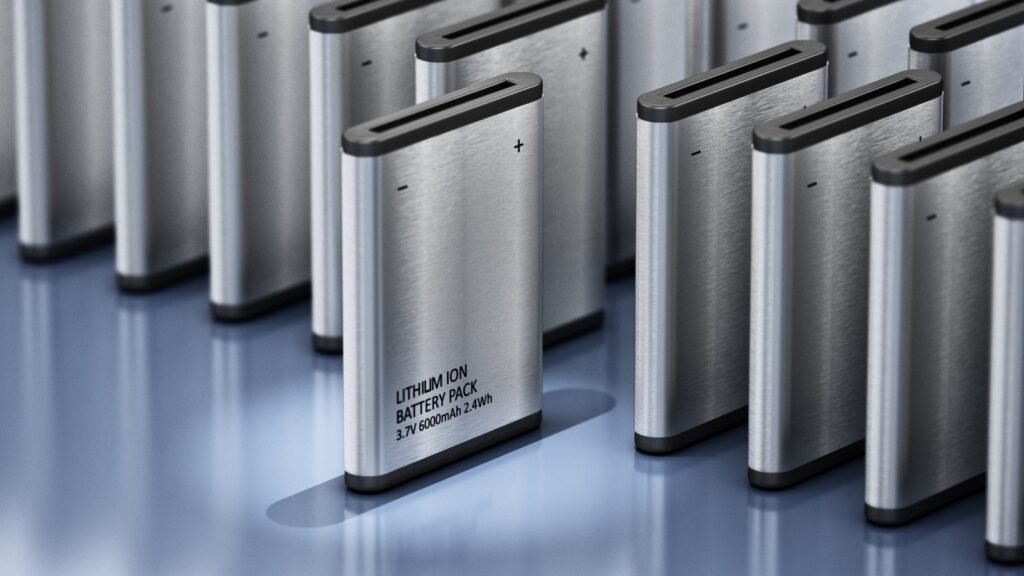India’s Electric Vehicle (EV) Industry is on the verge of a green revolution, propelled by rising environmental consciousness and a desire for environmentally friendly mobility. The priceless element lithium, a key in the batteries that power electric vehicles ahead, is at the centre of this change.
The Vital Role of Lithium in EV Batteries:
Lithium-ion batteries are the foundation of modern electric vehicles. Because of their outstanding energy density, endurance, and efficiency, they are the indisputable choice for EV producers all over the world. These batteries effectively store and release energy, allowing electric vehicles to compete with conventional equivalents in terms of range and performance.
However, the spike in demand for lithium-ion batteries raises concerns about the availability of this key resource to sustain the expansion of the EV sector. India is aggressively investigating its own lithium sources in order to lessen reliance on imported lithium and strengthen the EV sector.
Current Status of Lithium Reserves in India:
India’s demand for local lithium deposits has gained momentum. Several areas of the nation, most notably Jammu and Kashmir, have been recognized as prospective suppliers of this critical mineral. India has designated lithium as one of 30 essential minerals, emphasising its strategic importance.
While India’s lithium deposits may not compete with those of big producers such as Australia or Chile, they are a valuable indigenous asset that can play a critical part in the country’s electric vehicle goals. India’s present percentage of global lithium output is small, but this might improve if indigenous deposits are explored and developed more aggressively.
Challenges in Extracting and Utilising Domestic Lithium Reserves:
The possibility of native lithium deposits provides a unique set of problems. To reduce environmental concerns, sustainable mining and processing of lithium are critical. It is critical to strike a balance between economic benefit and environmental responsibility.
A good lithium supply chain also includes infrastructural development, regulatory frameworks, and technology improvements. To overcome these challenges, government agencies, private businesses, and research institutes must work together.
Impact of Lithium Reserves on India’s EV Industry:
Harnessing native lithium sources has a significant and diverse influence on India’s EV industry:
1. Increased Domestic Production: Reducing dependency on lithium imports will improve the EV supply chain’s durability and cost-effectiveness.
2. Lower EV Battery Costs: The battery accounts for a large amount of the cost of an electric vehicle. Domestic lithium manufacturing might result in more inexpensive batteries, making EVs more accessible to a wider range of consumers.
3. Implications for EV Market Growth: Affordability is critical for mainstream adoption of EVs. As battery costs fall, the affordability of electric vehicles will rise, resulting in increased sales and market expansion.
To put these advantages into context, lithium-ion battery prices have dropped dramatically over the last decade. A lithium-ion battery pack cost around $1,000 per kilowatt-hour (kWh) in 2010. By 2020, the cost has dropped to around $137 per kWh. Further decreases in lithium production prices may hasten this trend, making electric vehicles more affordable to customers.
Conclusion:
The Indian electric vehicle sector is on the verge of a dramatic shift, with lithium serving as its key. Exploration and use of indigenous lithium sources has the potential to increase India’s self-sufficiency in battery manufacture, reduce prices, and catapult electric vehicle adoption to new heights. Long-term success requires addressing the issues connected with lithium mining and assuring sustainable methods. India is positioned to emerge as a powerful player in the global EV revolution, lowering emissions and steering toward a greener and more sustainable future via strategic planning and collaborative efforts.



